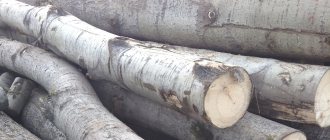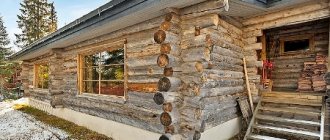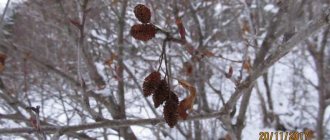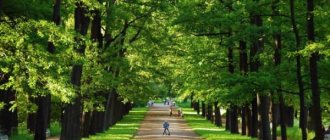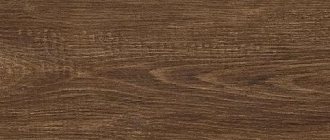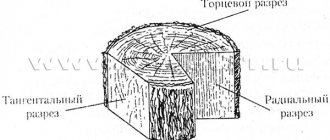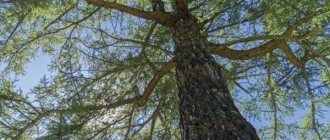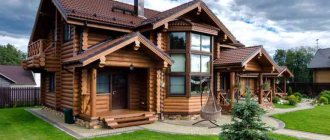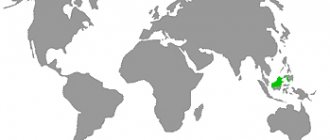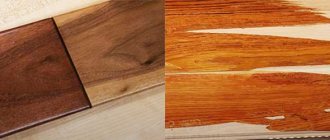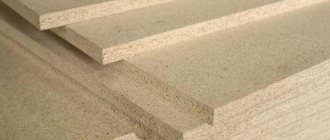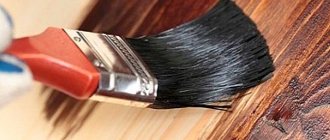Aspen (trembling poplar or lat. Populus tremula) is a tree of the Willow family. There are 3 genera in the family: willow, choicenia and poplar. Aspen belongs to the poplar genus. The tree is often mistaken for other members of its genus. It is not uncommon to try to distinguish aspen from balsam, black or silver poplar. In addition, in the forest you can confuse aspen with alder and linden, and at dusk - even with birch. What also makes it difficult to determine is that poplars easily cross-pollinate and form interspecific hybrids. It is possible to distinguish aspen from other trees only through a comprehensive comparison of morphological features.
Characteristic
Poplar trees belong to the genus of deciduous trees from the Willow family.
They are distributed in the temperate latitudes of Eurasia and North America, while covering part of the subtropical regions of China and Mexico, and are found in East Africa. In nature, they grow along rivers and on well-moistened slopes; some species can be found in the sand. At the same time, they need soil rich in micro- and macroelements and do not tolerate swampy places. At the same time, cultivated plants take root perfectly on any land.
The poplar genus has more than a hundred species, which are divided into six main sections:
- Mexican - plants of this group have the smallest height. They are a cross between aspen and poplar, common in Mexico and the USA;
- Deltoid - triangular-shaped leaves are located on long petioles. These trees are characterized by a pyramidal crown;
- Leucoids - considered the most ancient group of poplars. The leaves, catkins and buds of poplar of this species are characterized by large sizes;
- Popolus or folk - representatives of this group are distinguished by the fact that their buds and leaves do not secrete a sticky substance, and they are also characterized by the presence of long petioles, which is why the foliage begins to move at the slightest breath of wind. The leaves have a palmate lobe shape and are characterized by snow-white pubescence on the underside. The most famous representative of this group is the silver poplar;
- Balsamic - the leaves and buds of trees are characterized by the presence of a huge amount of fragrant resin;
- Turangi - from a distance very similar to aspen, but have a looser crown.
The height of poplar trees ranges from 30 to 60 meters, the diameter of the trunk is about a meter. Poplars grow very quickly and already at the age of forty years they acquire their final height (if they grow, it is not much), for which at one time this plant was given preference when landscaping streets.
The plant does not live long, usually up to eighty years (old poplar is highly susceptible to fungal diseases), although some species live up to one hundred and fifty.
Poplar roots are thick, strong, and in many species they are located superficially, and therefore extend quite far away from the tree. At the same time, some species, for example, silver poplar, produce many offspring on their roots, from which new trees grow.
The wood of the tree is soft and very light, the trunk is straight, the crown can have a wide variety of shapes: tent-shaped, ovoid, ovoid-pyramidal or pyramidal poplar is often found. The gray bark of a tree becomes covered with small cracks with age, while a poplar branch, on the contrary, has a smooth bark.
Both the leaves and flowers of the plant develop from the poplar bud. Poplar leaves are petiolate, arranged in a spiral along the branch; in some species the poplar leaves are pubescent, in others they are bare. It is interesting that the shape of a poplar leaf largely depends on the shoot on which it grew and even its location on it. Therefore, the same poplar leaves can have a wide variety of leaves - narrow, medium, wide.
By the leaves
It is easier to distinguish aspen from other poplars at the time of year when the trees have leaves: in spring, summer or early autumn. The buds and leaves, in comparison with other poplars, are less sticky and not as fragrant, since they do not produce resin. In early May, Populus tremula is covered with soft green foliage, but by summer the leaves darken and coarse, becoming dense. The aspen leaf is round or heart-shaped with teeth of different sizes. They can be distinguished from birch, linden and alder by their larger notches.
The leaves are 4–7 cm in size on young shoots and up to 15 cm on mature shoots, arranged alternately. The peculiarity of aspen is its long and flexible petioles, flattened in the middle, thanks to which, when the wind blows, the leaves spin and tremble (hence the name of the species tremula - “trembling”). The upper side of the leaves is rich green, looks shiny, the back is matte, a little lighter. Easily distinguished from silver poplar with white underside leaves - Populus tremula is green on both sides but velvety underneath.
The autumn color of the species is golden and burgundy; by this feature it can be distinguished from other poplars - they are characterized by lemon-yellow shades. It has been established that in the Moscow region, under the influence of industrial gases, aspen foliage began to become covered with dark spots.
Physico-mechanical properties of poplar wood
On what trees does chaga grow, how can you distinguish it from tinder fungus?
The density of wood is low; at a humidity of 12-15% it is 400-500 kg/m3. Poplar is classified as a light tree species. But the strength of wood can be compared with other hardwoods. Resistance to cracking is high, but chips easily. Abrasion resistance is good, since the surface fibers are compacted by mechanical stress.
Drying
Poplar wood dries slowly, without cracking or warping. Drying black and white poplar wood requires different modes. The fact is that in white poplars the core and sapwood have approximately the same moisture content, but in black poplars the core is wetter than the sapwood. This must be taken into account when drying workpieces.
Treatment
Processing is not difficult. Wood is easily amenable to sharp tools, both manual and mechanized. It cuts easier when fresh, but when processing dry workpieces, fibrous sawdust quickly wears out the saws.
Due to its friability, wood is difficult to sand and polish. The gluing process is not difficult. Easily painted with stains and mordants.
Poplar lumber
Density, strength and moisture content
One of the important indicators that directly affects the quality and final appearance of processed wood raw materials is wood density. This term refers to the ratio of the mass of wood of a certain moisture content to its volume.
Moreover, the more humid the woody part of the tree is, the greater its density. In addition, when assessing wood, an indicator of the conditional density of wood is also used, which is the ratio of the mass of the test sample in a completely dried state to its volume at the hygroscopic limit.
Indicators of density and conditional density of aspen are as follows:
| Density when dried | 470 kg/m3 |
| Conditional density | 400 kg/m3 |
Density coefficient at different humidity levels:
| Humidity level, % | Density coefficient, kg/m3 |
| 10 | 490 |
| 20 | 510 |
| 30 | 540 |
| 40 | 580 |
| 50 | 620 |
| 60 | 660 |
| 70 | 710 |
| 80 | 750 |
| 90 | 790 |
| 100 | 830 |
| In freshly cut condition | 760 (82) |
Thus, you can see that aspen wood has an average density of 490 kg/m3. The natural moisture content of this material when freshly cut is on average 82% with a maximum moisture content and water absorption of 185%.
For common aspen, these indicators will look like this (according to research by S.I. Vanin):
- Ultimate compressive strength in the direction along the fibers (at a humidity of 15%) – 374 kg/cm2.
- When stretched in the direction along the fibers - 1450 kg/cm2.
- When performing shearing in the radial plane – 44 kg/cm2.
- During the static bending operation (at a humidity of 15%) - 673 kg/cm2.
- When performing impact bending in the tangential direction - 0.37 kgm/cm3.
According to the “Handbook of Mechanical Properties of Wood”, the average values of wood strength will be as follows:
- Strength limit for static bending is 76.5 MPa.
- Tension along the fibers is 121 MPa.
- Compression along the fibers is 43.1 MPa.
- Splitting along the radial plane – 6.15 MPa.
- Along the tangential plane – 8.42 MPa.
- Impact strength – 84.6 KJ/m2.
- The modulus of elasticity of aspen wood during static bending is 11.2 GPa.
Aspen wood has good flexibility in various types of processing, including cutting, bending, painting and polishing. In addition, it peels well.
Applications of poplar and interesting notes about the tree
How to distinguish a rosehip shoot from a rose
Despite the fact that many people do not like the time when poplar plantations cover everything with fluff, it is worth recalling the benefits and some aspects of the use of this plant. Poplar is characterized not only by a high growth rate, which is beneficially used in landscape gardening, but also helps to purify the air from urban pollution (gas and smoke). In addition, it helps to destroy pathogenic microbes. At the same time, no other representative of the flora, not even conifers, can compare with it in terms of air filtration.
Poplar wood is soft and is successfully used in industries such as construction, furniture or paper industries. In order to use poplar wood with specified characteristics for industrial purposes, work is being done to develop hybrid and genetically modified varieties. Poplar foliage and inflorescences serve as the material from which natural-based dyes are made - yellow and violet, respectively.
Medicinal preparations are prepared from the buds of black poplar species, and they are also included in the popular Riga balsam. The shoots can be used as branch fodder for livestock feed.
It is curious that if the poplar growing near the house has a height of 50–60 m, then it can serve as a real lightning rod.
Since it has been found that some species of the genus have the property of not producing fluff, they are actively used in the green architecture of cities and park areas. Similar exceptions are laurel-leaved and pyramidal poplar. They try not to get rid of old poplar plantations, but carry out pruning in such a way that for about five years they will not encounter the problem of poplar fluff.
However, this aspect is not the problem with old poplar trees. Since the wood of the plant is not only soft, but can also easily rot, and the root system becomes extremely weak, such specimens may not withstand gusts of wind. Such a poplar can fall at any moment in windy weather or a thunderstorm and fall on the road or residential buildings. The worst case scenario would be a fall on a person or vehicle, so plants that have reached 60–80 years old must be inspected and removed if any traces of rottenness are detected.
By distribution
Aspen can be found along the banks of rivers and lakes, in forest and forest-steppe zones, in ravines and in the mountains. It belongs to light-loving species; Populus tremula does not live under the dense canopy. The consequence of the requirement for light is the death of shoots in the lower part of the trunk.
Unlike other species, trembling poplar does not tolerate swampy conditions, and therefore is not found on low floodplains. It does not tolerate dry soil well, but it can be distinguished by its ability to grow in soil with high acidity.
The breed is winter-hardy and grows in both northern and southern latitudes. Distributed throughout Russia, China, Mongolia, and European countries. It is part of mixed forests along with birches, oaks and conifers. In the steppes it forms small groves - aspen groves. It is in second place after birch in terms of distribution area among deciduous trees. In forests, the species is found much more often than other poplar species.
In decorative plantings it stands out for its red-yellow foliage in autumn; the Pendula form with hanging branches is popular in landscape design and when decorating the banks of reservoirs.
Green alleys and streets of Dushanbe
Honey mushrooms: how to distinguish them from false gifts of the forest?
When I first came to the city of Dushanbe and was driving from the station to the hotel, the road always went along alleys, the main tree of which was a slender pyramidal poplar. It seemed to me that we were driving through some kind of dacha suburb, and the city itself would be somewhere ahead. And I was very surprised when the driver stopped and said:
We've arrived.
Green alleys turned out to be central streets. In the city, each residential block is surrounded by a dense wall of tall pyramidal poplars. All streets and alleys are continuous city boulevards. This green miracle was created using artificial irrigation. Numerous irrigation ditches run from the highest mountains of the Pamirs and branch out along all the streets and alleys. There are grooves next to the sidewalks, and water gurgles there. Without them, trees could not exist in arid climates.
This construction of the city was caused by vital necessity. For residents of humid central Russia, it is difficult to imagine how dry the land is in the deserts and steppes of Kazakhstan. The city was built at a time when asphalt had not yet come into use. Now, in Soviet times, the city streets were paved with asphalt, but before they were ordinary dirt roads; If the cart rumbles, dust will rise. And it was necessary to somehow protect the housing. The best way is to plant trees - pyramidal poplars.
These slender, beautiful trees look like tall pillars entwined with lush green fringe. They stand side by side, like in a stockade, and form solid walls running along the sidewalks and blocking the houses from the roadway. Dust does not penetrate through such a dense barrier.
Therefore, pyramidal poplars are an indispensable decoration of villages and cities of the southern and steppe arid zone: Central Asia, Southern Kazakhstan, the Caucasus and Ukraine.
The vitality of the pyramidal poplar
Pyramid poplar exists in the wild only in the Himalayas, and in our country and in other countries it is bred artificially. It entered into culture several thousand years ago and was widespread in ancient Rome and ancient Greece, from where in ancient times it penetrated into the Crimea and the entire Black Sea coast, because Greek colonies existed there.
It is very easy to grow: just stick a piece of a cut branch into the ground and a whole tree will grow. The inexhaustible vitality of this tree is amazing. The ability to reproduce by vegetative means, when a severed piece grows back the missing organs and turns into a whole plant, is also characteristic of some other tree species, but with repeated repetition of such reproduction, later generations become weaker and more short-lived.
The pyramidal poplar has been propagating only by cuttings for thousands of years, during which time a great many generations have changed. It is impossible to even trace through which countries the ancestors of at least these trees now growing in Dushanbe passed. But the pyramidal poplar shows no signs of weakening or degeneration. It is still a strong, healthy and fast growing tree.
It is characteristic that in our country until now there were only male specimens and not a single female one. Of course, they do not produce fruits or seeds, but this is convenient: they do not litter the streets with fluff.
Now we also have females. Scientists need them for crossing and breeding new varieties. And new varieties will help push this frost-unresistant plant north. If now beautiful poplar boulevards decorate Vladikavkaz, then why not have exactly the same ones in Moscow?
At the Exhibition of National Economic Achievements in Moscow, a pyramidal poplar bred by Academician A. S. Yablokov has been growing well for many years. The trees have already reached a height of twenty meters, and will become even taller.
In order not to miss my next article and discuss it, subscribe in the upper right corner of the site. Visit the site and bring your friends. I am always glad to see you and I am sure that you will definitely find something interesting for yourself here.
- Botanical description
- Spreading
- Application
- Types of poplar
- Landing
- Reproduction
- Diseases and pests
The poplar genus is one of the most widespread and numerous among the representatives of the Willow family. In the temperate climate of Russia it is difficult to find an area where these trees are not found. Their popularity is explained by their unpretentiousness to the surrounding natural conditions, frost resistance, rapid growth and the ability to recover even if most of the trunks are destroyed.
The difference between aspen and poplar
It is not difficult to find signs of how poplar differs from aspen. There are several reliable signs:
- Branches from both trees with dormant buds broken in early spring should be placed in a glass of water. The poplar will be the first to start growing and spread its sticky leaves, while the aspen will wake up later and its leaves will not have such a pronounced shine.
- The aspen blooms first, followed by the poplar. Moreover, only the poplar will give abundant fluff.
- The structure of leaf petioles in the two species is different: aspen petioles are long and easily tied into a knot, while poplar petioles are short.
- Aspen branches are more fragile and break easily from force, while poplar branches are more likely to bend than break.
- If you compare the leaves, they have a lot in common, but there are also differences - the shape of the poplar leaf is more elongated and pointed.
What makes aspen classified as close relatives of poplars? Let us recall that botanists consider plants to be related if their flowers and fruits are similar in structure. This is precisely what is evident from the description of aspen and poplar. The flowers of all these trees are small, inconspicuous, collected in dense cylindrical earrings, which hang from the branches of the tree during flowering.
Look at the aspen in the spring when it begins to bloom.
On some trees you will see bright red catkins, on others - green. The former consist of many male, staminate, flowers, the latter - of female, pistillate flowers. The same can be seen with poplars.
The fruits of aspen and poplar are very similar in description: in both trees they are small, about the size of a grain of wheat, elongated oval boxes. When ripe, the capsule cracks into two longitudinal halves and releases the seeds inside it.
The seed is so small that it is barely visible to the naked eye. It is surrounded by many fine hairs. Spilling out of the boxes, the seeds fly through the air for a long time, like white fluff. Poplars also produce the same “fluff” in abundance in our cities.
Aspen is a tree in which you can observe the interesting phenomenon of autumn branch fall. Come to the forest in late autumn, look at the ground under some old aspen. If you take a closer look, you will see that here and there under the tree there are thin branches of different lengths lying around - both short, as long as a pencil, and longer. These twigs are alive, not withered, the leaves have just fallen from them.
Why did living aspen branches end up on the ground, and how did they break away from the tree?
To answer this question, you need to look at the end of the branch where it broke off. The fracture surface is smooth, rounded, similar to the head of a nail. There was no damage here. The branch separated from the tree by itself and in a very specific place. Just like a yellowed leaf in autumn. This means that the tree is deliberately getting rid of some branches.
Below you will find out where the aspen tree grows and how it reproduces.
Recommended species and varieties
P. alba "Raket" (syn. "Rocket") (T. white, T. silver)
Ascending gray branches form a narrow pyramidal crown. The leaves are 7 cm long, usually five-lobed. They are glossy green on top and silvery-white felt underneath, creating a shimmering effect when they sway in the wind. In heavily windy places, young specimens require support. Excessive root suckers can be a problem. The height and diameter of the plant is 15x5 m (20 years). Maximum height is 20 m.
Rising gray branches
P. alba "Richardii"
The leaves are 6-12 cm long, golden-yellow on top, silvery-felt underneath. The height and diameter of the plant is 10x6 m (20 years). Maximum height - 15 m.
P. alba "Richardii"
R. canadensis "Aurea" (T. canadian)
Very powerful trees with almost triangular light yellow leaves 8 cm long, which turn golden in autumn. The height and diameter of the plant is 16x12 m (20 years). Maximum height - 20 m.
Very powerful trees with almost triangular light yellow leaves
P. candicans "Aurora" (T. macrophylla)
The leaves are broadly oval, up to 12 cm long, fragrant with pine needles, colored in different shades of cream, pink and green. In middle age, these trees are usually severely affected by cancer. The height and diameter of the plant is 16x8 m (20 years). Maximum height - 18 m.
Broad oval leaves
P. nigra “Lombardy Gold” (T. black, Osokor)
A pyramidal, slowly growing tree with triangular yellow leaves up to 8 cm long. The height and diameter of the plant is 5x1.5 m (20 years). Maximum height - 8 m.
Pyramidal, slow growing tree
P. tremula "Pendula" (Aspen)
One of the most unpretentious weeping trees, more suitable for standard garden plots than ordinary aspen. Prefers moist, fertile soil, but grows well in a variety of soil types, even in the city. In early spring, grayish-purple catkins form before the rounded leaves bloom. Root suckers may appear, which requires careful selection of the planting site. The height and diameter of the plant is 8x7 m (20 years). Maximum height - 10 m.
One of the most unpretentious weeping trees
Climatic conditions
In order for aspen to feel good, climatic conditions must be met. You can find aspen in mixed deciduous forests. However, there are often isolated forest plantations consisting only of aspen trees. The tree usually grows in open areas. If a massive tree is located nearby, the aspen dies.
Pines and spruces often appear among the aspens. In the first years, aspen acts as a kind of cover for conifers. But gradually, when the trees become taller than the aspen, they shade it, and the tree loses its external characteristics and dies.
Meaning and Application
Poplar wood is widely in demand for industrial purposes. It is light and soft. It is used for the production of:
- paper;
- artificial silk;
- plywood;
- lumber;
- furniture;
- boats and so on.
Despite the low thermal conductivity of wood, the raw material is used to make firewood and charcoal. But these products are of low quality. The buds produce purple dye, and the leaves produce yellow dye. Shoots with leaves and young shoots are used as food.
Healing properties of poplar
Poplar often saved people from various troubles. The healing properties of poplar have been used in folk medicine since ancient times.
Leaves, shoots and buds are also used in pharmaceuticals; they have a lot of useful properties:
- The bark contains a large amount of alkaloids, tannins and glycosides. Decoctions based on it have a beneficial effect on the state of the nervous system and digestive system.
- Infusions from the leaves can speed up the healing process of wounds.
- Kidney-based teas help get rid of inflammatory processes and have a beneficial effect on the condition of the body as a whole.
Decoctions and ointments based on poplar buds and leaves have a beneficial effect on the condition of the ox, help fight insomnia and depression.
Use in landscape design
Poplar is an unpretentious and hardy plant that can grow in infertile areas and also withstand natural disasters (frost, drought, heat). The culture is often found in harsh regions where large poplar forest parks are planted. Naturally, caring for large plantings is problematic.
The tree has a beautiful lush crown, with which you can easily create pleasant partial shade. Decorative poplars look beautiful in group plantings. The plant grows well next to acacia, thuja, and juniper.
Consecutive planting of seedlings will help create a real wall that will separate it from the street or neighboring areas. The result is beautiful dense hedges, 1.5-2.5 m high.
The downside of poplar hedges is the bare lower part, so it is recommended to consider a two-row planting of plants. Low crops are planted in front, covering the almost black trunks of poplars. For such purposes, low-growing shrubs are used.
Poplars are not very popular because they require frequent pruning, as the plant grows and develops rapidly. Very quickly, in place of the cut branches, young shoots appear, from which a new crown is formed.
Poplar is widely used for landscaping streets and roads; it is planted in industrial zones. These plants can quickly destroy harmful components in the air. To get rid of poplar fluff, only male seedlings are used.
By choosing the right type and size of trees, you can create beautiful green frames for buildings near buildings. Poplar plantings are complemented with other crops (maples, chestnuts, birches, lindens, various shrubs), resulting in beautiful compositions. Row plantings of poplars mark the boundaries of parks and squares, gardens and other objects that intersect with the street. Poplars emphasize the decorative nature of compositions and provide cool shade.
It turns out that the familiar and ordinary poplar is not as simple as it seems. It is amazing in its properties and purpose. These giants are able to purify the street air better than any filters. But the plant is undemanding and unpretentious, develops quickly and actively with minimal care.
Features and value of aspen wood
Aspen is a tree (photos, descriptions and purposes of use are usually included in popular science publications) that is grown on a large scale. There are aspen plantations that are protected park areas.
Wood contains the following substances that are of great value:
- vitamins;
- tannins;
- fatty acid;
- microelements;
- carbohydrates.
The value is not only in wood. Leaves, bark and even roots contain many substances beneficial to the human body. The branches of the tree can also be used to feed animals. However, it is necessary to choose young plants whose shoots have not yet become woody.
Harm to aspen
In some southern regions, aspen is considered a pest that is effectively controlled. During the period of cutting down the main forests, aspen quickly spreads in free areas and displaces young seedlings of such a powerful crop as oaks. Therefore, many forestry enterprises are taking measures to cut down aspen trees.
After the adult plant is eliminated, a large number of young shoots appear in its place. Therefore, to completely eliminate the tree, it is necessary to uproot the roots. This procedure is very difficult to do, since the roots can spread over long distances and regularly sprout new shoots.
large-leaved
Large-leaved poplar, also known as Ontario poplar or Aurora, is a very beautiful, showy plant with large leaves. In European countries, this tree grows up to 10 m in height; in our frosty winters, it is significantly shorter.
When this tree freezes and its branches die, a pair of new shoots forms at the tip of each branch. As a result, the crown of this low poplar is very lush, the ends of the shoots are decorated with large leaves, on which cream spots are clearly visible.
This creamy color makes the large-leaved poplar very decorative; in mid-summer the color of the leaves changes to light green. The length and width of the leaf reaches 10 cm.
The tree is not resistant to frost and therefore short-lived. The average lifespan of this plant is 65 years.
Planting the Aurora poplar is advisable in places protected from cold northern winds; the tree needs abundant sunlight; urban gas pollution does not depress the plant.
Aspen combustion temperature, thermal conductivity
Like a number of other coniferous and deciduous tree species, aspen is used as a raw material for isothermal processes accompanied by the release of heat. In this regard, such an indicator as the calorific value of this tree is of particular importance.
In accordance with this criterion, defined as the amount of heat released by one weight unit of wood material during combustion, aspen can be classified as a low-heat species. That is, the amount of heat generated by it will be very small.
The burning temperature of aspen is 612 degrees. Firewood from this tree burns quite quickly, without the formation of charcoal residue. Because of this, they are not very well suited for heating purposes, since with their use it is impossible to maintain a constant operating temperature in the firebox.
However, such firewood is well suited for burning off soot and cleaning the chimney after using raw materials from softwood, which emit a large amount of soot and pollution.
The characteristics of aspen wood as a source of thermal energy are given in the following table:
| Name of firewood type (in naturally dried state) | Calorific value, kcal/kg | Specific calorific value, kcal/kg |
| aspen | 4953 | 1737 |
It is also worth noting that, compared to other tree species, aspen has a high ability to absorb moisture. Its hygroscopicity limit is 21.8 - 22.9%.
Despite its obvious shortcomings, aspen wood also has a number of positive qualities that deserve a rating of “five points” on a five-point rating scale. Namely:
- Decorative. Thanks to its pleasant silvery hue, it has been used by craftsmen since ancient times to cover the roofs of temples.
- Ease of use. Many products, including dishes, are made from soft and pliable aspen.
- Lack of resin. Because of this, it is often used to make baths.
- Environmental friendliness and safety for humans.
Description
The pyramidal poplar looks like a slender pyramid, it has the same geometrically correct proportions, a harmonious appearance due to the balance of the green mass and an upright, even trunk. The columnar type of black poplar with a narrow crown is also called Lombard or Italian.
This tree has several interesting features.
- Poplar lives a long time, its lifespan is about 300 years, but this depends on proper periodic pruning and how favorable its growing conditions are.
- This light-loving plant grows very quickly, especially in the first 10 years. If not pruned, the height can reach from 35 to 45 m. Low poplars are the result of human activity. Every year, for the purpose of rejuvenation, the top of the tree is cut off.
- Depending on whether the plant has a columnar or narrow pyramidal crown, its diameter ranges from 4 to 5 m.
- Old trees can reach a girth of 1 m.
- This species has a beautiful, smooth gray bark with a greenish tint; cracks can often be seen on it, but this is typical for mature trees.
- The shoots grow upward and slightly to the sides, the leaves are rich green in the shape of diamonds, have jagged edges and are attached to the branches with short, strong petioles. In September they turn yellow, and by mid-October they fly around.
- In April, at the same time as the leaves bloom, the crop blooms. In this case, the flowers are connected into inflorescences - earrings. Male flowers are dark red, female flowers are white. At the beginning of summer, elongated capsules of poplar fruits appear, containing several seeds covered with fluff.
- The poplar root system is powerful, accounting for a third of the height of the plant, goes deep into the ground, and is also significant in volume. Some shoots protrude above the ground, which does not prevent the roots from performing their basic functions.
- Not everyone knows, but the pyramidal variety of poplar releases oxygen into the surrounding space day and night, since the tree photosynthesizes around the clock.
- The resin collected by bees from pyramidal poplars is processed into such a useful substance as propolis - a medicinal component that can enhance immunity and has disinfectant and antibacterial properties.
Pyramid poplars are cold-resistant, but severe frost can disrupt their normal functioning. Female trees are quite rare; male plants are considered the most cultivated and widespread. They are used in cities to create shady alleys; they bloom, but do not form fluff. At the same time, pyramidal poplar is one of the amazing plants that has the ability to change gender.
By color
Trembling poplar, like other species, is bidomain, some trees have flowers of one sex, many have flowers of both sexes, but with a predominance of one of them. You can recognize aspen by its flowering - in April before the leaves bloom, earlier than other poplars. The tree begins to bloom at about 10–14 years of age. The flowers are small, collected in hanging earrings-spikelets, which developed from flower buds. It is easy to distinguish from linden by smell - the flowers of Populus tremula have a faint aroma. Earrings are red (men's) and green (women's). Unlike birch, whose flowers also form earrings, fluff is noticeable between the seeds of aspen.
Aspen pollen is small, yellowish, the pollen grains are smooth, and easily spread through the air. Germination of grains can be observed within an hour after pollination of female flowers.
The fruit is a tiny bivalve capsule with many seeds equipped with villi or down. Aspens are bushed just like other poplars. Only females spread fluff. The fruits ripen in early summer, and the mature capsules open easily and quickly. The seeds are small, pear-shaped, and thanks to the villi, they are carried by the wind over long distances. When they get into the soil they germinate very quickly.
Poplar - characteristics of wood
January 26, 2022 The poplar tree is common in central Russia; it is a deciduous tree. The maximum height of the plant is 30 meters; the crop reaches this size at the age of 40.
The poplar root system is powerful, superficial; often extends beyond the crown perimeter.
The annual rings on this wood are barely noticeable, even in the middle part, which makes it one of the best types of lumber. Boards, timber and logs have a uniform surface and inexpressive texture. The color of the material is white with a barely noticeable greenish tint.
For the production of lumber, it is recommended to use trees under 40 years of age. Old trunks have a loose structure and are unsuitable for use in construction.
Varieties
The poplar tree belongs to the willow family. The most famous types of this culture are:
- white poplar;
- black poplar;
- pyramidal;
- aspen (trembling poplar).
Most trees of these species grow in the wild, but some varieties are grown on special plantations for planting within populated areas. Each subspecies has its own unique properties, color and texture of wood, but their technical properties are almost the same.
Characteristics
The relatively small scope of poplar is associated with the capriciousness of the tree. To make boards or plywood, only the upper part of the plant is used, since the tree trunk often rots near the butt. In addition, the material loses a significant part of its volume after drying. As a result of natural drying, the volume of lumber is greatly reduced. When processing long logs in special chambers, the wood may warp.
Poplar has an average density, up to 450 kg/m3. This material has soft wood with a huge amount of longitudinal fibers. Lumber does not split well, but can be processed well with mechanical and hand tools. Our ancestors made dishes from poplar, hollowed out troughs and tubs. Without proper treatment, wood begins to rot and mold appears on its surface, so lumber that will be used in construction must be treated with antiseptics.
The best type is considered to be plants with a pyramidal crown shape. These trees are a hybrid of aspen and white poplar. Thanks to improved technical characteristics (resistance to loads, expressive structure of the material and low shrinkage), such trees are grown in special nurseries in North African countries, as well as in Iran and Argentina.
Advantages and disadvantages
The main advantages of poplar are:
- beautiful wood texture;
- relatively light weight;
- sufficient strength of the dried material;
- good thermal insulation qualities (low thermal conductivity);
- ease of processing;
- absence of secretions, resin.
The disadvantages of wood include a significant decrease in the initial volume upon drying, the need to treat the wood with special compounds, warping of the trunk during drying, and a relatively small yield of lumber.
Scope of application
Due to its low strength, poplar is not used for the manufacture of load-bearing structures, beams and logs, but lumber from this tree can be used for other purposes. One of the directions is the production of plywood sheets, which will be used for formwork.
Poplar wood is often used to make wooden containers, chipboards, furniture panels, pallets (pallets for transporting goods), and coffins for burials. Production waste is sent to paper mills for recycling.
Soft poplar wood is easy to work with and serves as a raw material for making carved panels and other decorative elements and garden sculptures.
In the old days, poplar was used to make railroad sleepers.
Specific and volumetric weight of wood
Important indicators on the basis of which the quality of the wood used is assessed include its specific and volumetric gravity. To calculate the specific or relative weight of a wood material, its weight is divided by the same amount of water.
For aspen wood it is, at a humidity of 12%, 510 kg/m3. Moreover, unlike trees of other species, the values of this indicator in aspen are not constant, but can vary quite widely.
This is due to the structure of the material’s fibers, which are highly porous. In other words, commercial aspen wood always contains a certain amount of moisture, which it easily releases when drying and picks up just as easily when placed in a more humid environment.
In addition to specific gravity, it is also customary to distinguish between the volumetric weight of wood or the weight of a unit of volume, which is measured at a raw material moisture content of 15%.
Data on the volumetric weight of aspen with changes in its humidity are given in the following table:
| Humidity percentage | Weight 1kg3 wood |
| 12-18% | 500 |
| 18-23% | 550 |
| 23-45% | 600 |
| Freshly cut | 800 |
Types of poplars
The genus includes about 90 species. Most of them are wild trees. Many representatives are the work of breeders. These hybrid poplar species combine decorative properties and resistance to adverse conditions.
White or silver
White poplar (Populus alba) is found under different names: silver, belle, snow white. Most common in Asia and Europe. Trees of this variety grow up to 30 m. White poplar is a long-lived tree, its age reaches 65-400 years. The poplar trunk is short but thick. The crown is spherical. The branches begin to grow at a height of 2 meters from the soil. The bark is gray and smooth, sometimes with a greenish tint. In trees that are too old, the color of the bark becomes almost black.
Small silvery buds appear on the shoots. The leaves appear deltoid in shape. The leaf blade is green on top and light silver underneath.
In spring, elongated inflorescences cover the shoots. The seeds resemble cotton wool that scatters throughout the streets. Active flowering occurs in mid-May, seeds ripen by July.
Canadian view
Canadian or delta poplar (populus deltoides) is the work of breeders. Externally, this hybrid resembles a delta-shaped tree. The variety is distinguished by its large height and spreading crown. In spring, large brown buds, abundantly covered with gluten, appear on the tree.
The leaves are shaped more like a triangle, with small teeth along the edge. Width up to 10 cm, length up to 7. Attached to shoots on a cutting 3 cm long.
Poplar catkins form during the period when the buds swell. Full flowering begins in April. At the beginning of summer, seeds form and disperse over a long distance. Canadian poplar is considered the tallest.
Black poplar (sedge)
In the middle zone to Perm, as well as in the Crimea, Central Asia and Western Siberia, black poplar (Populus Nigra) grows. This is a powerful tree that chooses light forests, river banks with loose soils.
The bark of young specimens is initially light gray and smooth, but over time it becomes almost black with cracks. The leaves are diamond- or triangle-shaped and dark green. The plant is hardy and easily tolerates cold winters and periods of drought. The plant is undemanding to soil, but develops much faster in nutritious soils with a high humus content.
Sweet poplar
The most common fragrant poplar (Populus Suaveolens) is in Siberia (its eastern part); the Far East is considered its homeland. It is also found in Northern China and Mongolia. The maximum height is about 20 m. Alleys of this ordinary, familiar poplar are found on many streets of Russian cities.
The fragrant poplar is not too demanding on the composition of the soil, but the plant is most suitable for black soil or clay areas. It is characterized by high frost resistance; frosts up to 40 ° C are not terrible.
It blooms simultaneously with the leaves blooming, by mid-June it is in full bloom and poplar fluff is scattered throughout the streets.
Pyramid view
The tallest variety of poplars, loving light. The height of the trees is 35-40 m. The duration of existence is about 3 centuries. Pyramidal poplar (Populus Pyramidalis) mainly grows in Central Asia, Russia, the Caucasus, Ukraine, and Italy.
It grows well in illuminated areas with slightly acidic or neutral soil. It grows and develops as quickly as possible in the first ten years. Powerful shoots are located at an angle of 90° to the main trunk. A narrow crown is formed.
The bark on top is dark in color, all covered with small cracks. The trunk diameter of adult poplars can exceed 1 m. Young shoots are covered with smooth light green or olive bark. The flowers are united in elongated inflorescences and appear immediately after the first leaves appear.
The leaves are deep green above and light below with a finely toothed edge. The pyramidal species grows well in city conditions; it is not afraid of exhaust from cars and enterprises.
Laurel poplar
Grows in Siberia. Laurel poplar (Populus Laurifolia) reaches 18 m and grows well in shady places. The tree has a beautiful wide tent-shaped crown.
The leaves are rich green, lanceolate in shape, attached by shortened cuttings to numerous shoots. It looks like the leaves are growing in bunches.
This species does not develop very rapidly, but it tolerates the smoke of city streets better than anyone else.
Where does aspen grow?
- The growing area of aspen is outlined by the mountains in northern Africa and the Eurasian belt.
- A significant part of the growing environment is allocated to Russia. In our homeland, aspen has a wide range and is distributed in the vast majority of regions.
- On the northern side , the line runs through a dense forest bordering the tundra.
- The southern border is outlined by dry steppes.
- And in the forest-steppe zone, the tree creates small islands, called “aspen pegs.”
- Near the sea , aspen takes on the form of a bush.
- It can even exist in the mountains , at an altitude of more than 2000 meters.
Aspen tends to form forests of the same type, in which it dominates, with only a small number of other species remaining on the upper tier.
Conditions for a favorable life for aspen
Aspen needs good lighting ; if its neighbors are larger and take up a significant area of light, it gradually dies.
Aspen can often be found among forests of other trees; due to its durability, it forms part of the admixture of most plantings.
In place of spruce or oak forests that were once destroyed by a strong fire, aspen forests often form.
The approximate lifespan of such aspen growing companies is 80-100 years. Such a forest lets in a lot of sunlight, which makes it possible for the same spruces and majestic oaks, which need the sun, to grow.
As a result, a kind of restorative cycle of life is created, where the aspen plays the role of a nanny.
Those tree species that grew under its foliage gradually overtake it, and having overtaken it, they shade it.
Since aspen is a very sun-dependent delicate plant, it gradually dies in the resulting shade . Thanks to this, aspen plantings make it possible to renew the population of their fellows.
Aspen propagation: features
We are interested in the details of the propagation process of a tree called aspen.
Its seeds have a very low level of endurance , and become unsuitable for use after just a few days, from the moment they fall out of the boxes.
An important condition for successful germination is a sufficient level of moisture in the soil.
Only once on such soil do the seeds have a chance to grow. If the ground is covered with leaves, the grain will simply get stuck halfway and die.
Such conditions do not make every area of soil suitable.
Therefore, young animals grown from seeds are not such a common sight. They are found in places where the soil has been plowed, loosened and sufficiently moistened. There are simply none in the forests.
How aspen creates forests: propagation by root shoots
When you have the opportunity to visit an aspen forest, take a close look at the already mature specimens of this wood.
Reproduction of aspen in forests occurs, in the overwhelming majority, with the help of long systems of roots and shoots scattered throughout the plant’s habitat.
Somewhere nearby, a young shoot will definitely appear, very similar to a poplar. The height of the shoot is approximately up to the knee for an adult.
And how did they get here:
- To answer this question, you need to take a shovel and carefully clear the ground around the young tree.
- You'll see something interesting. A long and thick cable-like root of an adult aspen will run through the ground. It is from this that this green aspen tree originates.
- Such a root can grow and stretch quite long distances in any direction.
- If you really want to, you can dig up a path from the root to its tree and see how many offspring it has produced.
- Young aspen trees are shoots that originate from the roots of the mother tree ; they are also called root shoots.
Fighting aspen
In some places we have to fight with aspen: it causes harm, drowning out more valuable tree species. But it is difficult to fight it. The aspen tenaciously clings to the territory it occupies. When an adult tree is cut down, young aspens begin to grow rapidly and grow from the roots. They seem to replace the dead mother plant. All these offspring occupy a fairly large area, significantly larger than the one originally occupied by the tree. In a word, by destroying one mature tree, we bring to life many young aspens and increase the area occupied by aspen. Consequently, cutting down large aspens is a completely ineffective way to control this tree species.
Does this mean that there is no way to fight aspen? Of course not! An inventive person figured out how to destroy this tenacious tree. True, the method of dealing with aspen is very labor-intensive. It consists in the following.
From an adult aspen tree, a wide ring of bark is cut along the entire circumference of the trunk, i.e. living outer tissue, right down to the wood. As a result, the paths along which food goes from the leaves to the roots are cut. Without receiving the substances necessary for life, the roots weaken and gradually die. In this case, all root shoots die. The tree itself also gradually dries out. In short, by removing a ring of bark, you can immediately destroy both the mother tree and its offspring.
Look at the photo of the aspen tree, a detailed description of which is presented on this page:
